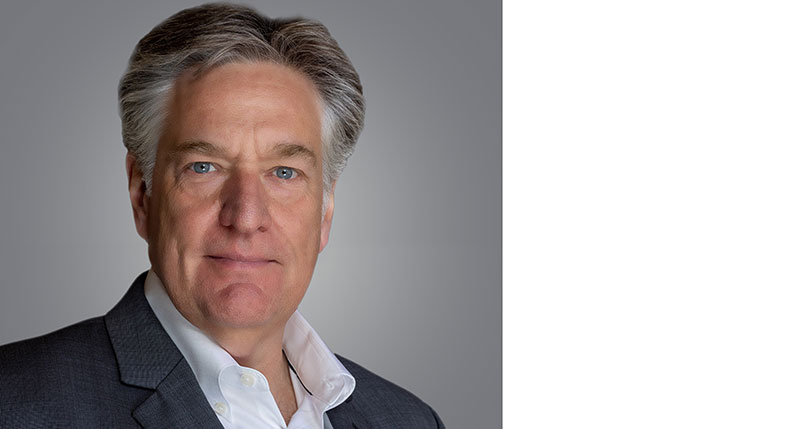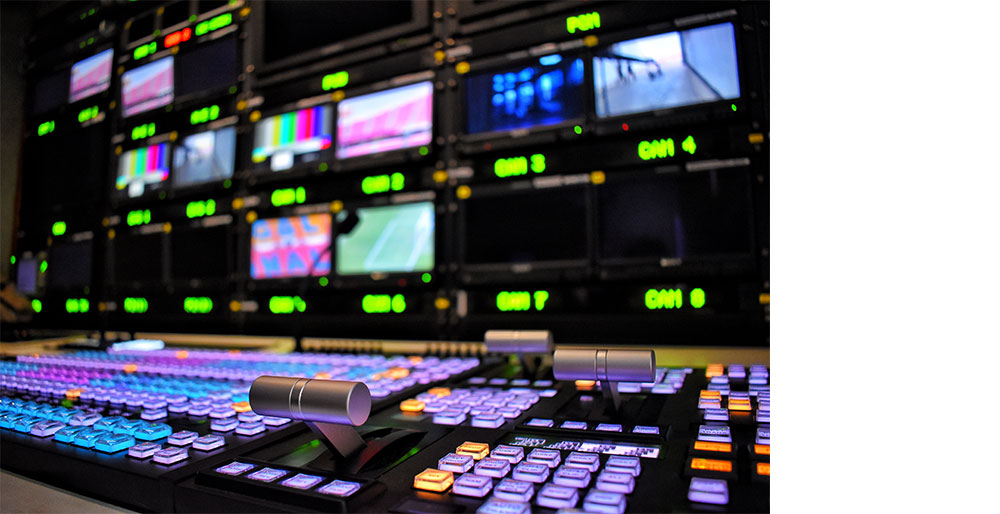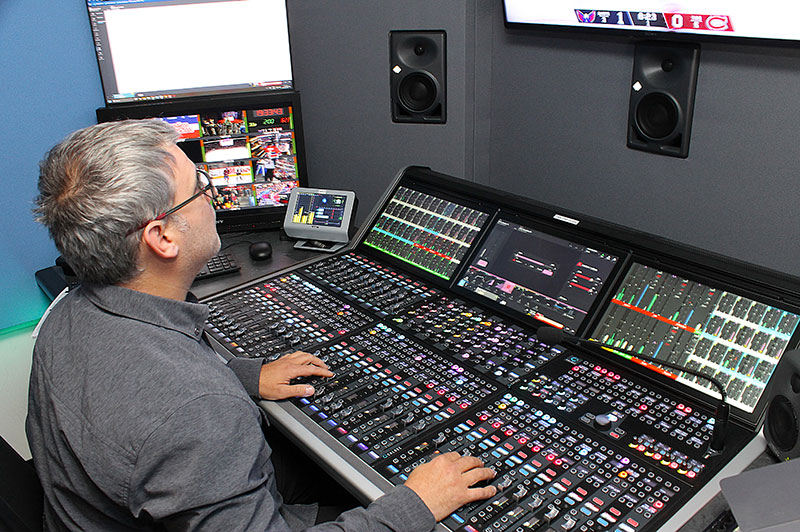Imagine Communications’ Steve Reynolds anticipates broadcast trends, ending an era of revolution as evolution takes hold in monetisation, ST 2110 adoption and AI practices.

Steve Reynolds, President at Imagine Communications anticipates a number of trends unfolding in the broadcast industry over the coming year, ending an era of revolution as evolution takes hold in monetisation, ST 2110 adoption and AI practices, accompanied by the ongoing need to prioritise green initiatives.
Over the past few years, the broadcast industry has witnessed a flood of articles, conferences and press releases talking about ‘an era of change’, many of them aiming to document or explain the change in viewership dynamics. Audiences have moved from watching what broadcasters schedule for them, to watching what they want, when they want it, where they want it. Steve considers that this revolution in how broadcasters operate, and how viewers engage with that content, has impacted every part of the industry.
“I would argue that the revolutions are over,” Steve said. “In 2024, it’s time to take all these changes and evolve them into new structures, new services and new workflows that are appealing to audiences and profitable for providers.”
New Ways to Monetize CTV
For Imagine, this era of change has seen the company’s focus swing from bespoke hardware and industry-specific connectivity, to applications intended to serve the full gamut of connected TV (CTV) services and advertising. “CTV is a convenient way to bracket together all the consumer-driven changes ― from consumption models to distribution technology and platforms to the business models that media organizations have implemented to profit from the rapid change,” said Steve.
“Simply stated, CTV is what enables viewers to select the content they want on the device to hand when they want to watch it. It’s shorthand for streaming, SVOD, AVOD, FAST, and all of the other innovations that the recent revolutions in television have brought us.” However, he doesn’t claim that the television business has completely transformed from the old days of linear broadcast. While early adventures in CTV were largely subscription-funded, advertising is experiencing a rapid resurgence.
“We talk about FAST (free, ad-supported streaming television) and AVOD (ad-supported video on demand), but essentially, we are still talking about the revenue streams that have always powered the television industry – selling the content, or finding a way to monetise the audience watching the content,” said Steve.

Steve Reynolds, President at Imagine Communications
Unified Approach to Advertising
“This leads to the first trend I would identify as part of the evolution following the revolution: the need to take a unified approach to selling and managing advertising across traditional linear broadcasting, FAST and new digital services. It is the same content to the same consumers, so advertising across these platforms must be harmonized to maximize the value of the audience watching that content.
“CTV inventory is arguably better than linear television, because of its capabilities to be addressable and measurable. But if you treat CTV inventory like digital inventory, you erode its value by taking away the premium aspects of TV such as brand safety, mass simultaneous reach, or fixed placements for sponsorship. Or you risk alienating viewers by ignoring the artfully constructed balance between reach, frequency and pacing that linear television had perfected.”
CTV is clearly biased towards digital at the moment, which Steve considers is the cause of the imbalance between supply and demand driving CPM ad campaigns down. In 2024, providers need to find the formula that moves CTV back towards premium rates and fix the viewer experience to make CTV advertising more valuable.
However, he notes that addressable advertising must now be squared with privacy issues. “In the UK, Ofcom has announced its intention to apply the same content regulations to CTV as broadcast television,” he said. “The EU is developing a similar stance via GDPR, and the California Consumer Privacy Act (CCPA) has set the trend for individual protection in the USA.
“Again, we point towards the systems that managed linear ad sales, inventory management and ad decisioning for so many years, and so many dollars; our industry already knows how to work within the regulatory boundaries - we just need to be collectively smart enough to draw upon those lessons.”
Incentives to Adopt ST 2110

The content distribution aspect of the M&E industry has also changed rapidly during the move to CTV accompanying the need to create and deliver content across an ever-growing list of platforms, including linear, streaming and on-demand. Fortunately, technology advances have made it possible to migrate to software capable of supporting this type of unified playout from a single origination system, running on virtualized infrastructure, COTS computers and standard IP networks. Steve expects to see that trend come close to completion in the next few years.
He said, “Looking at the technological issues that accompany this evolution, SMPTE ST 2110 will continue to establish itself as the global standard for live television – a progression that underscores the growing significance of IP technology within our industry. Organizations such as the VSF, through their ground-to-cloud and cloud-to-ground initiatives, have played a pivotal role in this shift. The ratification of JPEG XS has also been pivotal in enabling live, low-latency, high-quality contribution to the cloud, further accelerating the adoption of IP technology.
“We will also continue to see IP technology – especially ST 2110 and IPMX – move deeper into the playout and channel origination segments of our industry. Nearly every major broadcast centre and cloud-enabled playout project we have looked at in the past two years includes a path towards ST 2110. Encouragingly, we see this trajectory sparked not simply by the desire to adopt the latest and greatest technology, but rather by a business driver to reduce cost, improve operations and future-proof for an increasingly agile tomorrow. This is indeed a positive sign for the evolution to come.”
Practical Approaches to AI
Artificial intelligence will continue to be a talking point – while it may have been over-hyped in its early stages, it has potential to be of great value to the industry. Steve said, “Generative AI, for example, can add to the advantages of machine learning and pattern recognition. At Imagine, our Customer Care Group is looking at using GenAI to make our customer support systems more effective, building a knowledge base from the extensive data gathered from our historical ticket system, and using it to train AI models.
“The fanfare may have muddied the waters on the use of AI in media. But I see real benefits if the industry approaches it realistically and practically – viewing AI as a tool to solve problems rather than a magic wand.” One further example at Imagine is adding automation to ad tech and video products, which can help enhance media companies’ businesses.

Prioritising Our Environment
Finally, and with a long-term view in mind, Steve believes the industry must prioritise green initiatives that help combat the climate change that is undoubtedly affecting our planet. Sustainability was a hot topic at IBC2023 and must continue to be top of mind.
Power consumption must be a focus, not least because making installations more energy efficient reduces OPEX, while also lowering the carbon footprint. “The need to make clear statements on the energy impact of any business – including a media enterprise – is moving from a moral obligation to a regulatory one, and it is likely that carbon footprints will become a standard consideration when making technology decisions,” Steve said.
“The move to IP connectivity and software-based architectures is inherently more environmentally friendly compared to SDI platforms. As well as reducing energy consumption, it also helps tackle another key issue: e-waste. COTS equipment offers a longer lifespan and greater versatility than older, modular equipment. It also provides much greater processing density, so the same results can be achieved in fewer devices, drawing less power and requiring less air conditioning.”
The media industry is an exciting, stimulating and challenging place to work. Steve is confident that these goals for the future will continue to bring to market new ways for customers to build thriving and profitable businesses, explore the benefits of technology transformation such as AI, and forge a more sustainable future through the best green practices. imaginecommunications.com




















